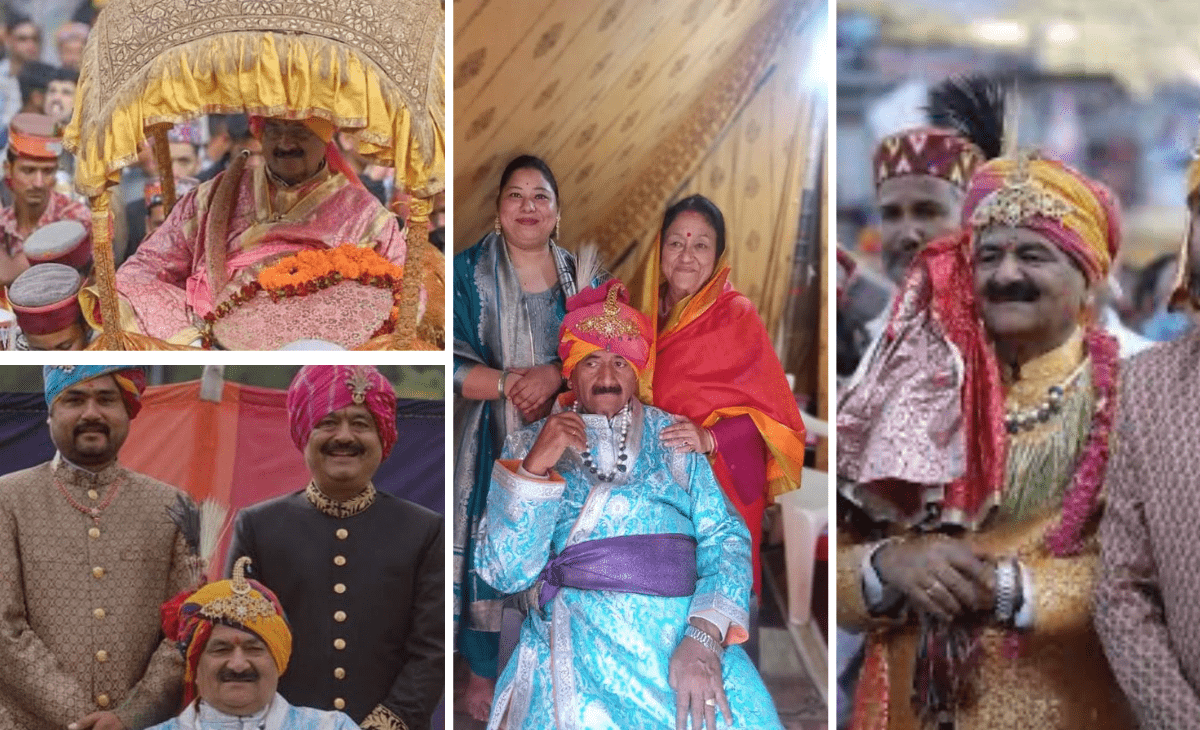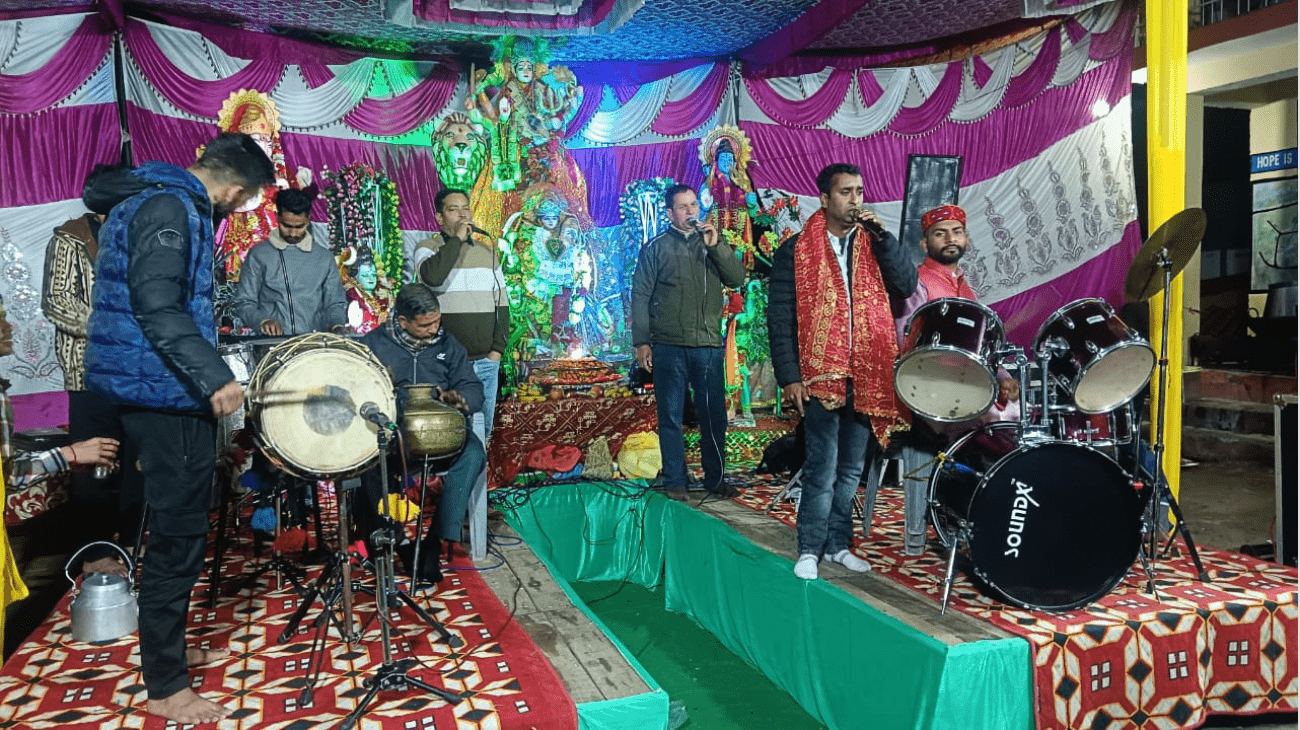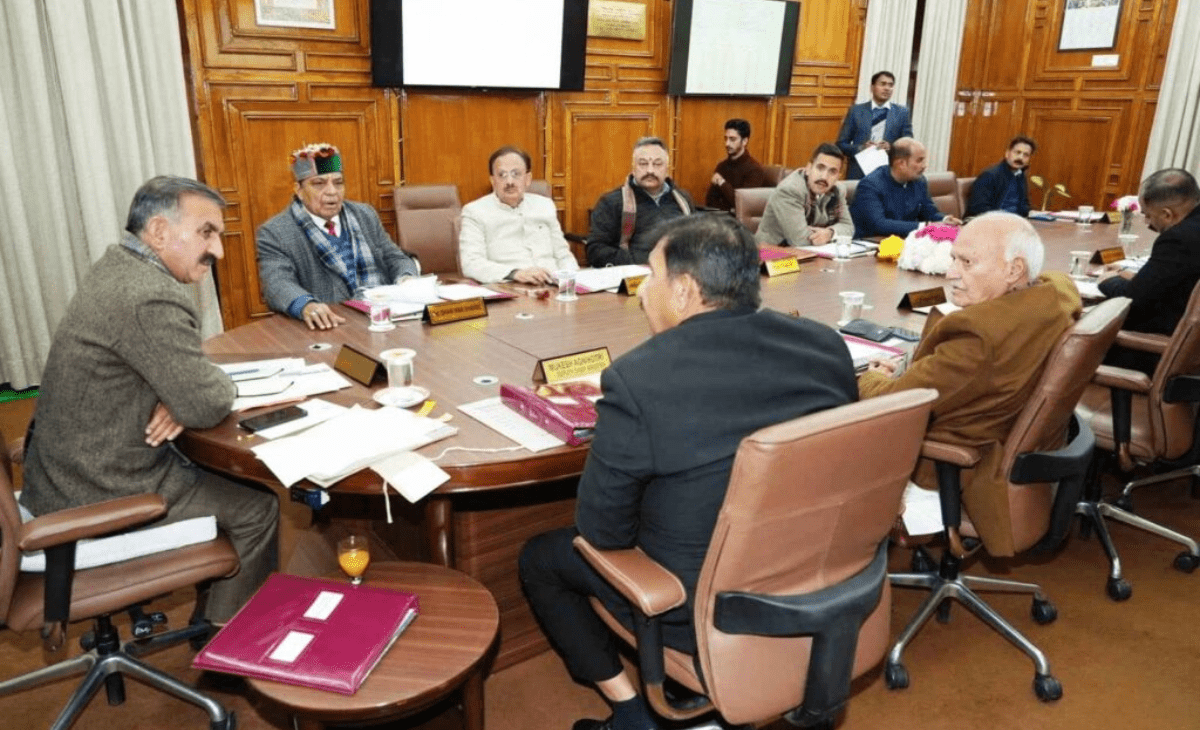Royal heir continues 365-year-old legacy of devotion and faith
Munish Sood
MANDI:
As the sacred Kullu valley reverberated with the sound of drums and conches during the ongoing International Dussehra, one moment stood out for its timeless grace and cultural depth — the Dev Milan, when hundreds of deities from across Himachal Pradesh bowed before Maheshwar Singh, the present chharibardar of Lord Raghunath and descendant of Raja Jagat Singh, founder of the centuries-old tradition.
Dressed in ceremonial attire synonymous with the dignity of the ancient Kullu throne, Maheshwar Singh took his place on the royal seat under the grand Chanani at Dhalpur ground. As the deities arrived with their followers, dancing to the rhythmic beats of dhol and narsingha, each bowed before the royal chair, symbolising respect not to the man but to the divine order established more than three centuries ago.
Origin of divine legacy
History traces the roots of Kullu Dussehra to 1660 when Raja Jagat Singh, ruler of the erstwhile princely state of Kullu, brought the idol of Lord Raghunath from Ayodhya after being afflicted with a curse. Seeking redemption, he surrendered his crown to Lord Raghunath, declaring the deity as the true ruler of Kullu, and himself became the chharibardar — the bearer of the Lord’s symbolic staff.
That act of humility marked a turning point in Kullu’s spiritual history. Since then, every king of Kullu has performed this duty, maintaining the divine hierarchy that places the deity above the throne. Maheshwar Singh, as the present custodian, carries forward that legacy with the same reverence and resolve.
Tradition to continue without compromise: Maheshwar
Over the years, Maheshwar Singh has often reiterated that the sacred relationship between the royal house and Lord Raghunath transcends time and politics. “Till I am alive, the tradition will continue without compromise,” he once remarked, standing firm against every attempt to dilute or redefine the centuries-old system of faith.
There have been moments of confrontation too. Successive governments have, at times, attempted to bring the Raghunath Temple under administrative control, but none succeeded. Maheshwar Singh believes divine will protected the sanctity of the institution. “When faith is pure, no worldly power can alter it,” he has said on more than one occasion.
Festival rooted in people’s faith
Unlike Dussehra elsewhere in India, Kullu’s celebration does not end with the burning of Ravana’s effigy. Instead, it begins after the Dussehra of the plains — a symbolic assembly of gods and goddesses who gather to pay homage to Lord Raghunath, the presiding deity of the valley.
On the sixth day of the festival, when the Dev Milan takes place, the sight is nothing short of divine theatre. The royal chair, flanked by priests, drummers and flag-bearers, becomes the focal point of devotion. Villagers, pilgrims and tourists watch in reverence as each deity’s chariot halts briefly before the throne — a gesture that binds faith, tradition and community spirit together.
Royalty as custodian, not ruler
In today’s democratic era, the Kullu royalty no longer wields political power. Yet, Maheshwar Singh remains the moral and spiritual nucleus of the Dussehra. His presence, marked by the gleaming swarn chhadi (golden staff), represents continuity — a reminder that true leadership lies in service to faith, not in authority.
For the people of Kullu, he is not merely a former king but a guardian of the cultural soul of the valley. His role ensures that every ritual — from the divine procession to the final immersion of the idols — is performed with precision and purity, as envisioned by Raja Jagat Singh centuries ago.





